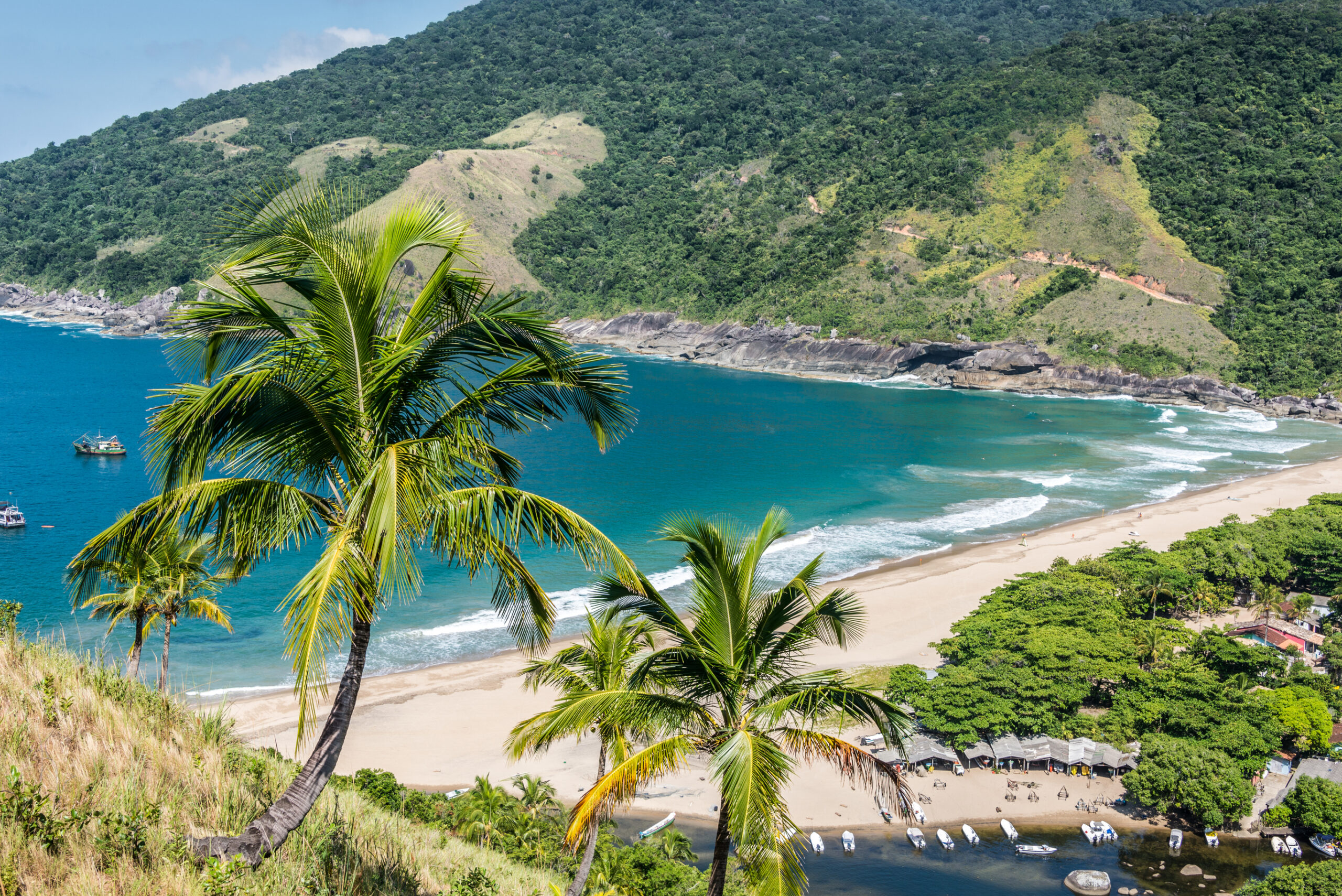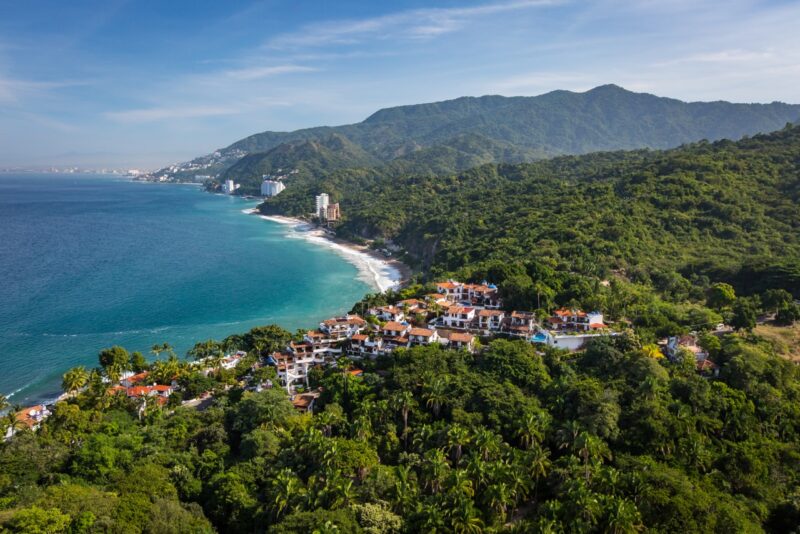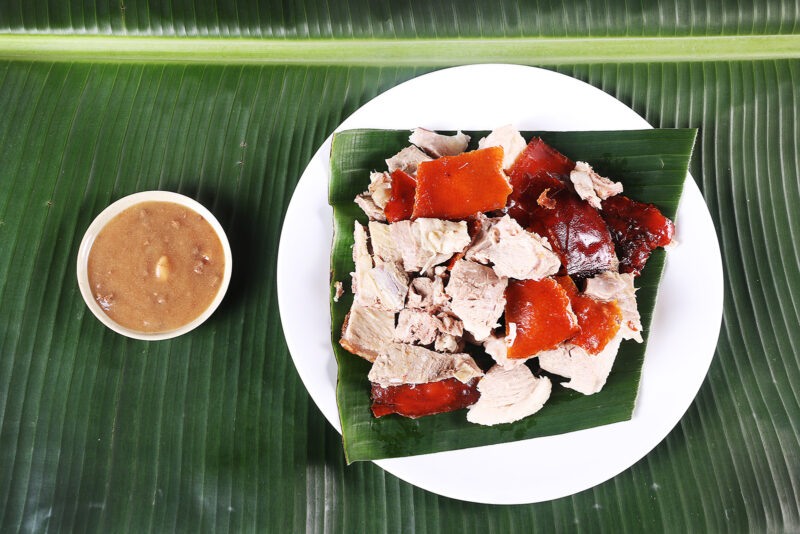Brazil‘s islands carry a different kind of energy than its mainland beaches. Sure, the coastline is stunning from north to south—but the islands slow you down.
They’re the kind of places that make you truly pause and look around. You’ll wonder: What if I just dropped everything and moved here? These are places where waking up with your feet in the sand is the norm, not the exception. Here, waves don’t compete with car horns because there probably aren’t any cars in the first place. The Wi-Fi really does suck, but just enough to keep you fully present. Plus, the same fisherman you saw near the pier earlier caught the fish on your plate.
Whether it’s Fernando de Noronha’s protected marine life, the barefoot calm of Boipeba, or the wild forest trails of Ilha Grande and Ilhabela, these islands share something that mainland destinations often don’t. It’s a sense of separation that gives way to deep presence. It’s where life runs on tide schedules and conversations stretch longer, usually over fresh fish and cold beer.
Many of Brazil’s best islands are home to vibrant fishing communities whose simple way of living remains intact. Even on the larger ones, like Florianópolis, you find small neighborhoods tucked between lagoons and surf beaches. City life takes a backseat to one more connected to nature.
Next time you’re planning a visit down south, consider one of Brazil’s best islands.
Fernando de Noronha – Pernambuco
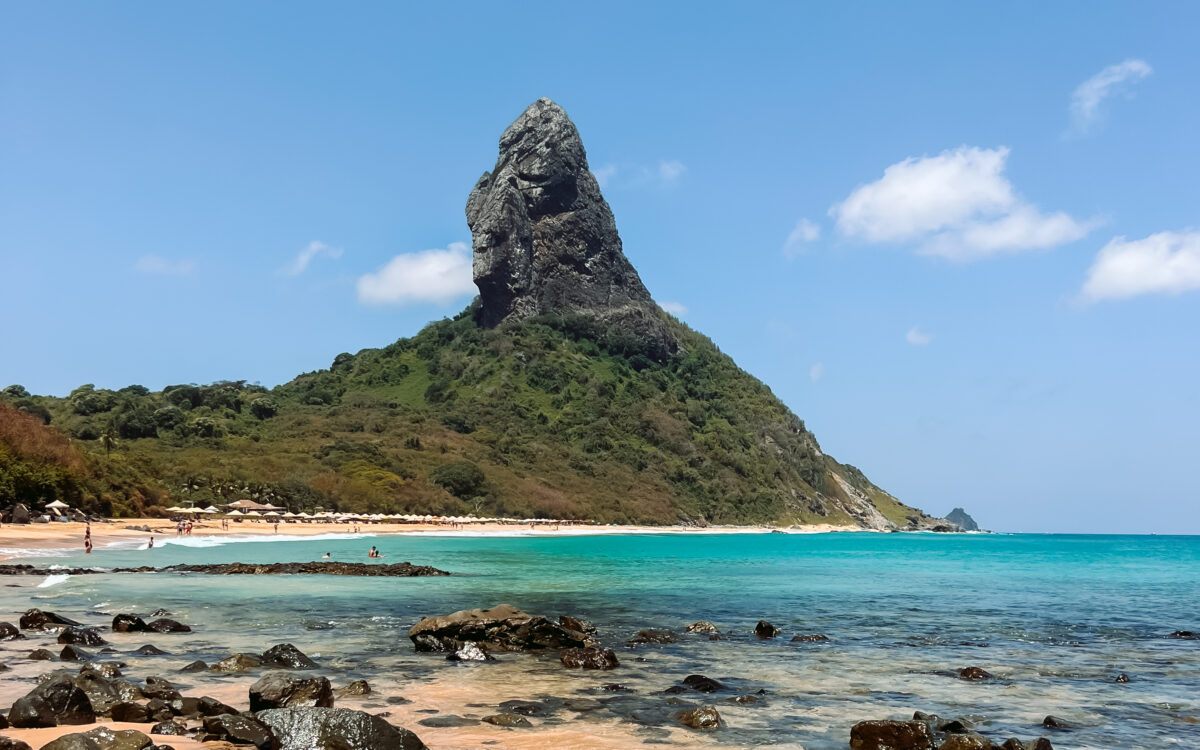
Let me start this list off with a bang: Fernando de Noronha is, hands down, the most stunning island in Brazil. In fact, it might be the most beautiful in all of South America. People know it simply as Noronha, and this island differs completely from anything on the mainland. Volcanic activity formed the landscape millions of years ago, creating dramatic scenery. Picture rocky terrain and giant finger-like boulders that jut into the sky. They’re set against golden sands and an ocean shaded the bluest of blues.
The island sits in the middle of the Atlantic Ocean, about two hours east of the mainland by plane. Meanwhile, Noronha is most famous for its beaches. The Baía do Sancho often ranks among the most beautiful in the world. However, many people make the journey for the abundance of marine life. The waters overflow with biodiversity, so a casual swim can bring you face-to-face with a sea turtle, a pod of dolphins, or even a reef shark. The entire island serves as a protected marine reserve. It houses species you won’t find anywhere else in Brazil. For example, spinner dolphins put on a show at the aptly named Baía dos Golfinhos (Dolphin’s Bay). You can watch this spectacle from a deck on a nearby clifftop.
Spend your days snorkeling with sea turtles at Baía dos Porcos or hiking coastal trails with panoramic views. For a splurge-worthy stay, book a pousada with a view—like Pousada Maravilha—and don’t miss a seafood moqueca at a beachside spot like Mergulhão or, my personal favorite, Restaurante Cacimba.
Ilha do Mel – Paraná
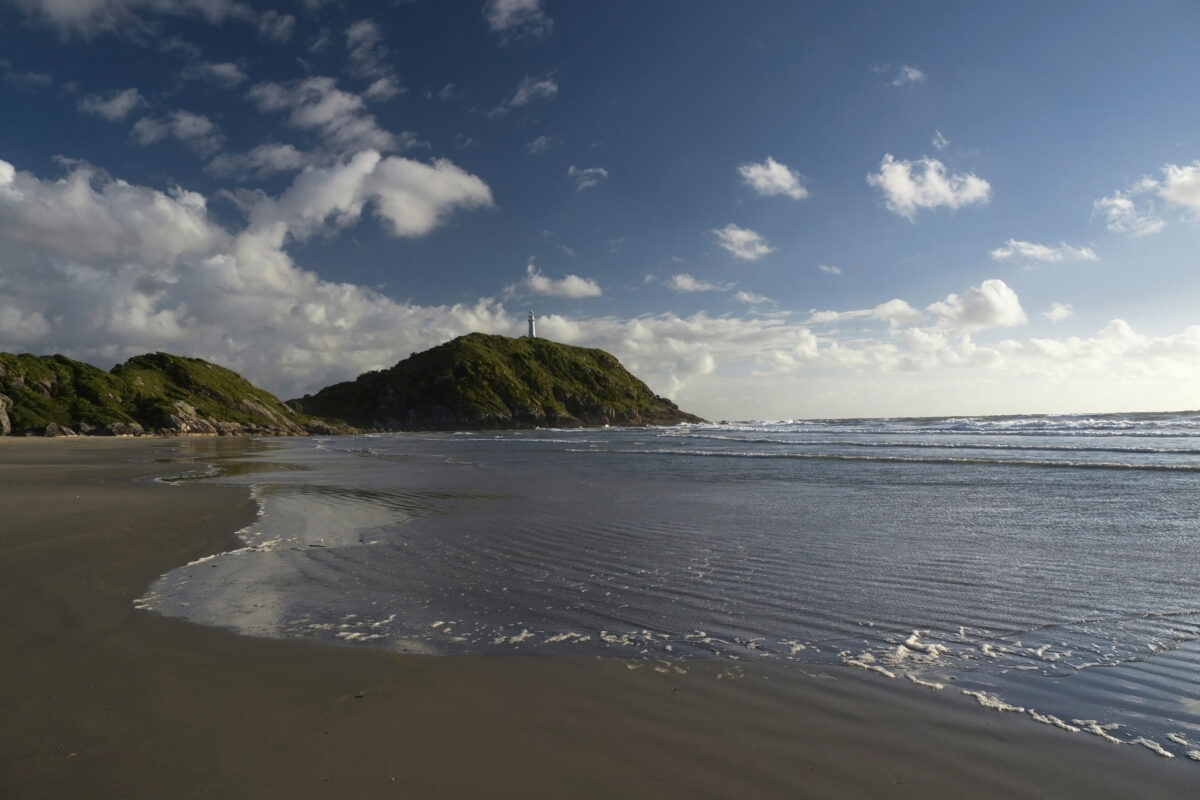
As an ode to my backpacking days, I’m adding a couple of roots spots to this list, as we like to say in Brazil. Ilha do Mel is one of them—the kind of island where it’s best to travel light, preferably with a backpack, since getting there usually involves some combination of plane, car, boat and a final stretch on foot.
Ilha do Mel is a laid-back island set off the coast of Paraná, in the south of Brazil. This region is known for its cooler climate, dramatic Atlantic Forest landscapes and quieter beaches compared to the tropical north. It’s the kind of island where you check tide tables to reach certain beaches—and with no roads and little light after dark, it truly feels like stepping back in time. The only way to get around here is by foot or bike, via sandy trails that wind between beaches, villages and landmarks like the Fortaleza de Nossa Senhora dos Prazeres, a historic fortress that once guarded the coastline.
Encantadas is one of two main villages and it’s where you’ll find the best sunsets. Just pull up a chair at a beach bar and let the sky put on a show. Nearby is the Gruta das Encantadas, a seaside cave said to be especially magical at sunrise. A 5-kilometer trail connects Encantadas to the other village on the island, passing through quiet beaches like Praia do Miguel, where the Atlantic still feels wild and untouched.
Ilha Grande – Rio de Janeiro
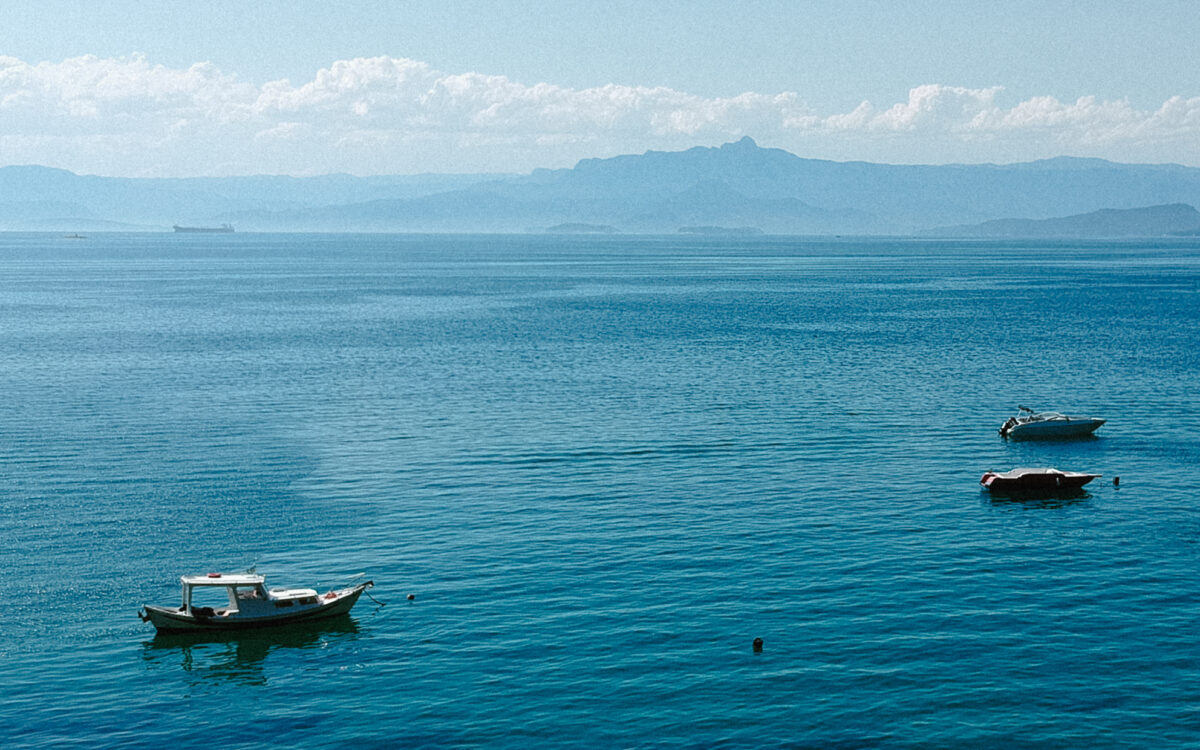
The first time I set foot on Ilha Grande, I felt like I had landed in Thailand. Think sandy roads, a mellow hippie vibe and green, wild landscapes. Located just a couple of hours from Rio de Janeiro, it’s a favorite weekend escape for locals and a popular Carnaval alternative for those looking to trade city chaos for something a bit more peaceful.
Its name translates to “Big Island”—and that, it is. Here you’ll find more than 100 beaches to choose from—many of them still wild and hard to reach, like Aventureiro, famous for the iconic L-shaped palm tree that leans over turquoise waters like something out of a postcard. You can reach those remote beaches—as well as waterfalls and panoramic peaks—via dozens of trails that criss-cross the island. For the truly adventurous, there’s even a multi-day trek through the jungle, taking you from one end of the coastline to the other.
Most visitors stay in Vila do Abraão, the rustic main town with restaurants, beach bars, small markets and boats heading to all corners of the island. If you like going off the map completely, Praia de Araçatiba is a tiny village with little infrastructure other than a few simple hotels and seafood restaurants. That said, my favorite spot is Bonito Paraíso, a beachfront hotel near the main town yet far enough to feel like a place of its own. Accessible only by boat or a 30-minute jungle trail, the beach feels like a secret shared only with fellow guests. Green, glassy waters and a laid-back beach bar make it hard to leave.
Ilhabela – São Paulo
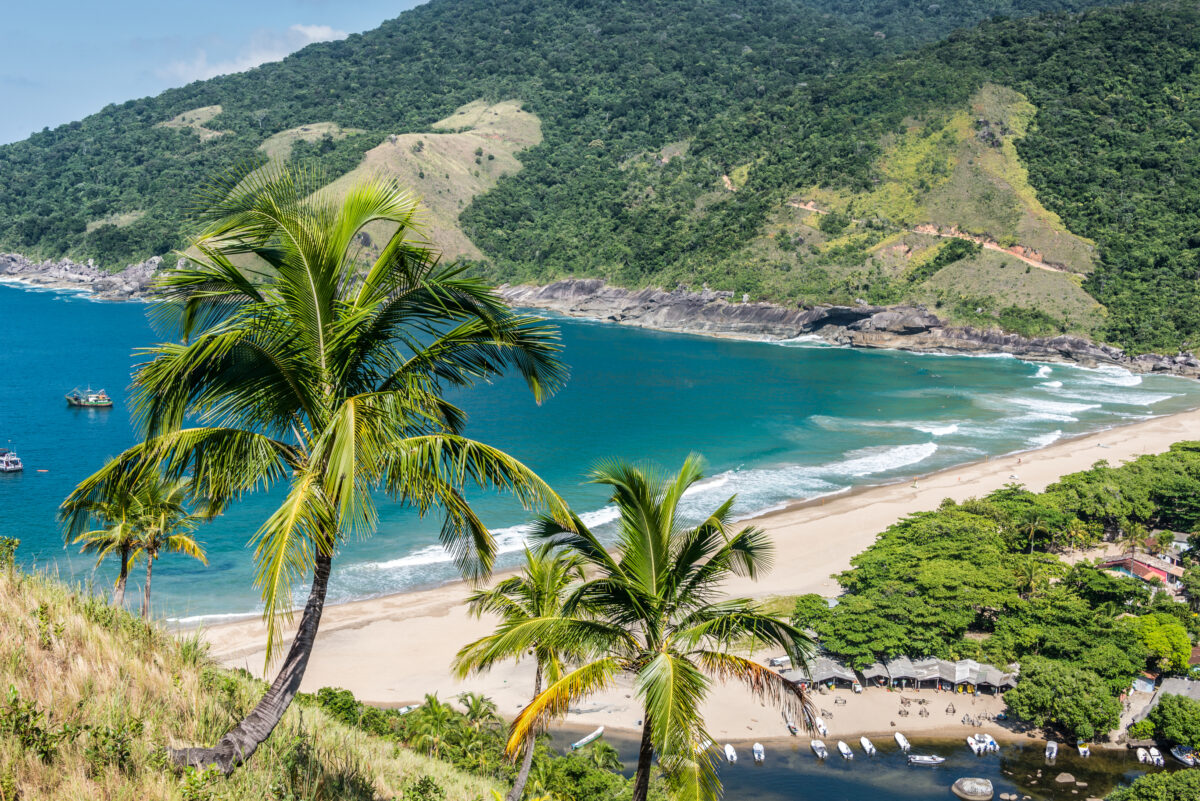
When a place is literally called “Beautiful Island,” you know you’re in for something special. Ilhabela is just that—a lush, Atlantic Forest–covered paradise quietly tucked off the coast of São Paulo. Yes, the same state as Brazil’s biggest metropolis. But here, skyscrapers give way to waterfalls and wild, rugged beaches.
Roughly 85% of the island is protected as a state park, home to an impressive ecosystem of forests, rivers, mangroves and hundreds of waterfalls. Locals claim there are over 360 waterfalls on the island and you’ll often hear the sound of rushing water on your way to remote beaches like Bonete and Castelhanos—a heart-shaped cove—that require a hike or 4×4 to reach.
Back in the village, things slow down. Praia do Perequê is where you’ll catch locals sipping caipirinhas as the sun sets behind the mountains. For dinner, head to the historic town center for live music and fresh seafood at Makai’s beautiful rooftop. If you’re looking to stay somewhere cozy and close to nature, there are rustic pousadas scattered around the island’s quieter beaches, or boutique hotels with views of the sea and the rainforest all at once.
Ilha de Boipeba – Bahia
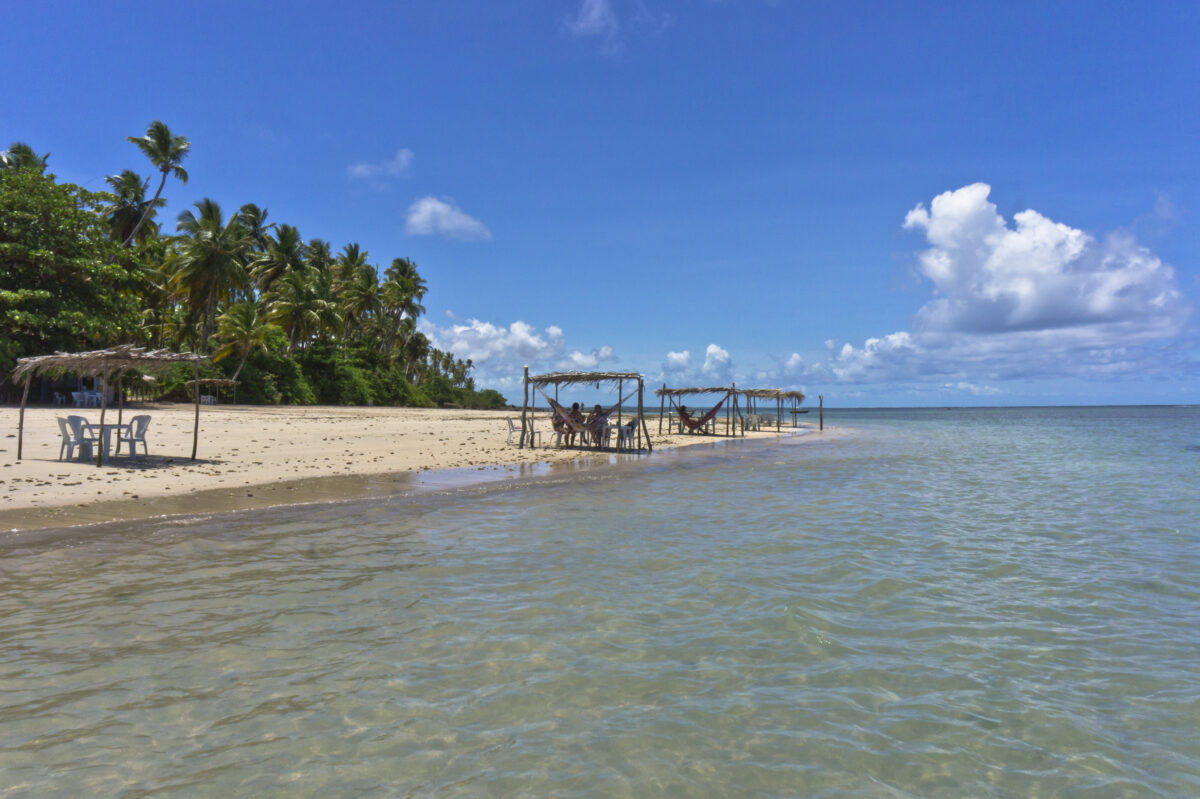
Boipeba sits off the coast of southern Bahia, the one Brazilian state I find myself returning to over and over again. There’s a palpable energy here that’s hard to put into words. It’s a soulful, grounding rhythm that runs through everything—from the slow, drawn-out Portuguese accent to the beaches where the river meets the sea. As the birthplace of Brazil’s Afro-Brazilian heritage, Bahia holds deep cultural weight, but also offers a kind of lightness, a warmth that’s hard to resist.
This island shares the same stretch of coastline as the much more popular Morro de São Paulo, known for its wild New Year’s parties and nightlife. But Boipeba turns the volume down. I haven’t made it there just yet, but a new friend who lives on the island left me craving a visit. She spoke of a slow, simple life in tune with nature and the local village. In the off-season, the island quiets down almost completely—just what she was looking for when she left the big city.
There are no cars on the island, and you can walk to nearly every beach through stretches of coastline where mangroves give way to white sand. Most travelers stay in Velha Boipeba, the island’s main village, where dinner means grilled seafood on the beach and evenings under a sky full of stars. Snorkel at low tide, kayak through rivers at sunset, nap in a hammock between swims. There’s not much to do in Boipeba (and that’s exactly the point).
Florianópolis – Santa Catarina
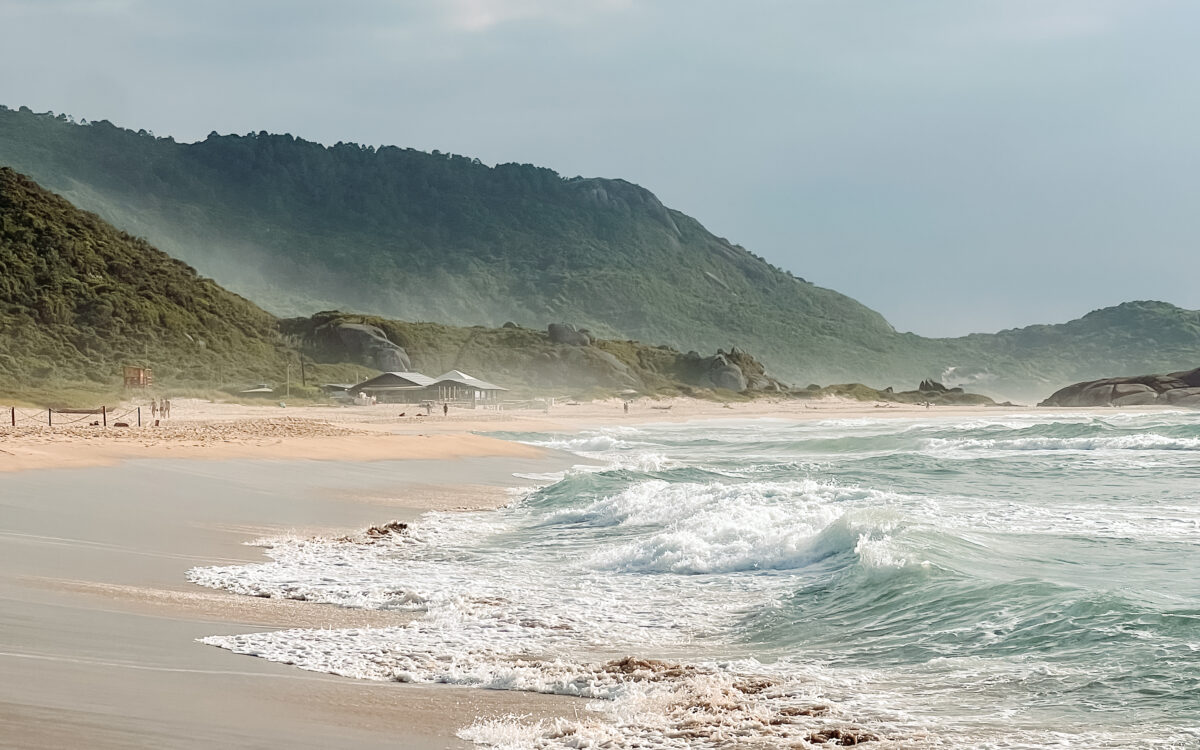
I just returned from my second trip to Floripa—as the island is affectionately known—and this one was different. I spent most of my time visiting family, shopping at local markets and living like the locals do. And it was lovely. The island is known for offering one of the best qualities of life in Brazil: tranquil, safe and surrounded by natural beauty.
Unlike Brazil’s smaller, rustic islands, Florianópolis is a full-fledged city. It’s connected to the mainland by a bridge and has neighborhoods, high-rises, big lakes and highways. Still, nature reigns here. The island is home to more than 40 beaches, including some of the best surf spots in the country. The fun extends inland, too, with hiking trails, waterfalls and lakes ideal for water sports.
You’ll want to rent a car and explore here. Start your day at the beach, then head over to Santo Antônio de Lisboa, the charming, historic village on the western side of the island, for lunch with a view of the bay. End the day at the Dunas da Joaquina, sand dunes where you can watch the sunset.
Nicknamed the Ilha da Magia, or “Magic Island,” Florianópolis is renowned for its blend of surf culture, folklore and a certain mystical charm passed down from the Azorean settlers who arrived here centuries ago. Some say it’s the energy of the island, others point to the beauty of its coastline. Either way, Floripa has a way of drawing people in and making them stay a little longer than planned.

